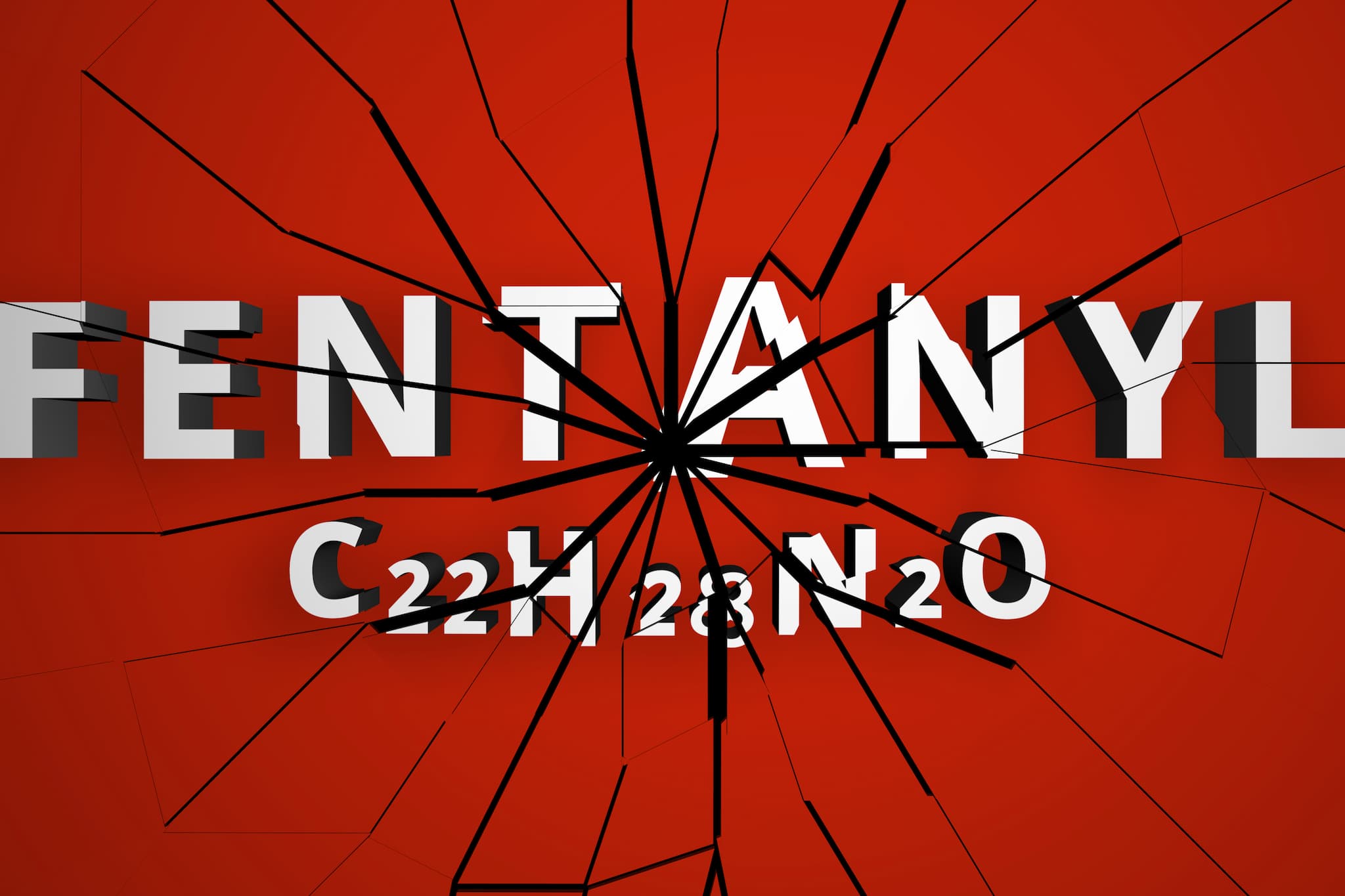
It’s a story that pretty much begins and ends with pain. Fentanyl is a medicine originally used to treat patients with severe pain, especially after surgery, or those who have taken painkillers for chronic pain and developed a tolerance to opioid medications. But unlike the version prescribed by doctors, synthetic fentanyl is illegally produced in labs working with chemical reactions that require specialized skills and access to restricted chemicals. Today, illicitly manufactured fentanyl and other synthetic opioids are the primary drivers in the rise of overdose deaths in the United States and abroad. What is synthetic fentanyl? What’s it made of? What are fentanyl’s effects?
Opioids like fentanyl
Opioids are a class of drugs naturally found in the opium poppy plant. Some are made from the plant directly, and others – like fentanyl – are made in labs using the same chemical structure. Synthetic opioids mimic the effects of natural opioids like heroin but can be many times more potent. Most synthetic opioids are class A drugs, which means they’re illegal to possess, give away or sell.
What is synthetic fentanyl made of?
The full chemical formula for fentanyl is N-(1-(2-phenethyl)-4-piperidinyl-N-phenyl-propanamide. The drug is derived from piperidine, an organic compound that is used in the synthesis of many pharmaceuticals. The pharmaceutical industry has developed fentanyl derivatives by manipulating the basic molecule to create various potencies.
Synthetic fentanyl is sold illegally as a powder, dropped onto blotter paper, put in eye droppers and nasal sprays, or made into pills that look like other prescription opioids. And though it’s important to be aware of what synthetic fentanyl is made of, it’s more important to understand the risks that come with its illegal use and manufacture, not to mention the potential danger from other illegal drugs that contain it.
Synthetic fentanyl is now being mixed with heroin, cocaine, methamphetamine, xylazine and MDMA. The high potency of fentanyl greatly increases the risk of overdose, especially when the user isn’t aware that fentanyl has been added. They can easily underestimate the opioid dose they’re taking, which may be more than their bodies are able to handle, and more likely to lead to overdose.
Where does synthetic fentanyl come from?
As an additive to other dangerous drugs, fentanyl has proven to be cheap and profitable for clandestine laboratories. About 500,000 counterfeit pills can be manufactured from a single kilogram of fentanyl. Historically, China has been responsible for many of the precursor materials needed to synthesize the drug, as well as being a major supplier of fentanyl to the United States. In recent years, however, China has begun to regulate fentanyl and its derivatives.
As reported in the New York Times and elsewhere, Myanmar (Burma), the world’s second-largest producer of heroin after Afghanistan, is now ground zero for much of the world’s synthetic drug trade. Shan State in Myanmar is a remote region, wracked by ethnic conflict and limited governmental control. Add in the absence of effective policing and easy access to precursor chemicals, and the business environment for illicit labs is ideal.
What are the effects of fentanyl?
Fentanyl binds to opioid receptors throughout the brain and body located in areas that regulate the experience of pain and emotion. The body’s opioid receptors are also responsible for controlling respiration. Whereas a prescribed dose of fentanyl may slow respiration in clinical treatment, higher doses without medical supervision can cause the body to stop breathing.
Taking fentanyl triggers a flood of dopamine, creating euphoria and a sense of extreme relaxation. The effects are similar to taking heroin but more powerful. Unfortunately, in addition to euphoria and relaxation, fentanyl can also induce nausea, drowsiness, sedation, confusion, respiratory depression, respiratory arrest, coma, and death. The initial flood of dopamine alters one’s mood and perception via the limbic system. The brain is wired to continue seeking pleasurable sensations, which is why individuals struggling with sedative addiction face such a high likelihood of abuse and dependence with drugs like fentanyl. Over time, the body’s tolerance for the drug increases, and more is needed to feel the same euphoric rush. Essentially, the brain no longer works as it did before the introduction of fentanyl. Other important factors include:
- A decrease in the brain’s natural production of norepinephrine
- Depression of the central nervous system
- Reduction of respiratory function, a slower heart rate and lower body temperature
- Possible deterioration of white matter in the brain, affecting decision-making and emotional reaction to stress
Confidential help is here waiting for you.
The professionals at Raleigh House can help minimize and reverse the harm from using synthetic fentanyl through effective medications like Naloxone, behavioral therapies and treatment programs — all in a safe, serene setting designed to help you refocus your choices for drug-free living. Read more facts about fentanyl and fentanyl overdose here, and learn how medical detox at Raleigh House can help manage the challenges of opioid withdrawal here. We invite you to reach out at any time by calling XXX-XXX-XXXX or completing and submitting the easy contact request form on our website.
